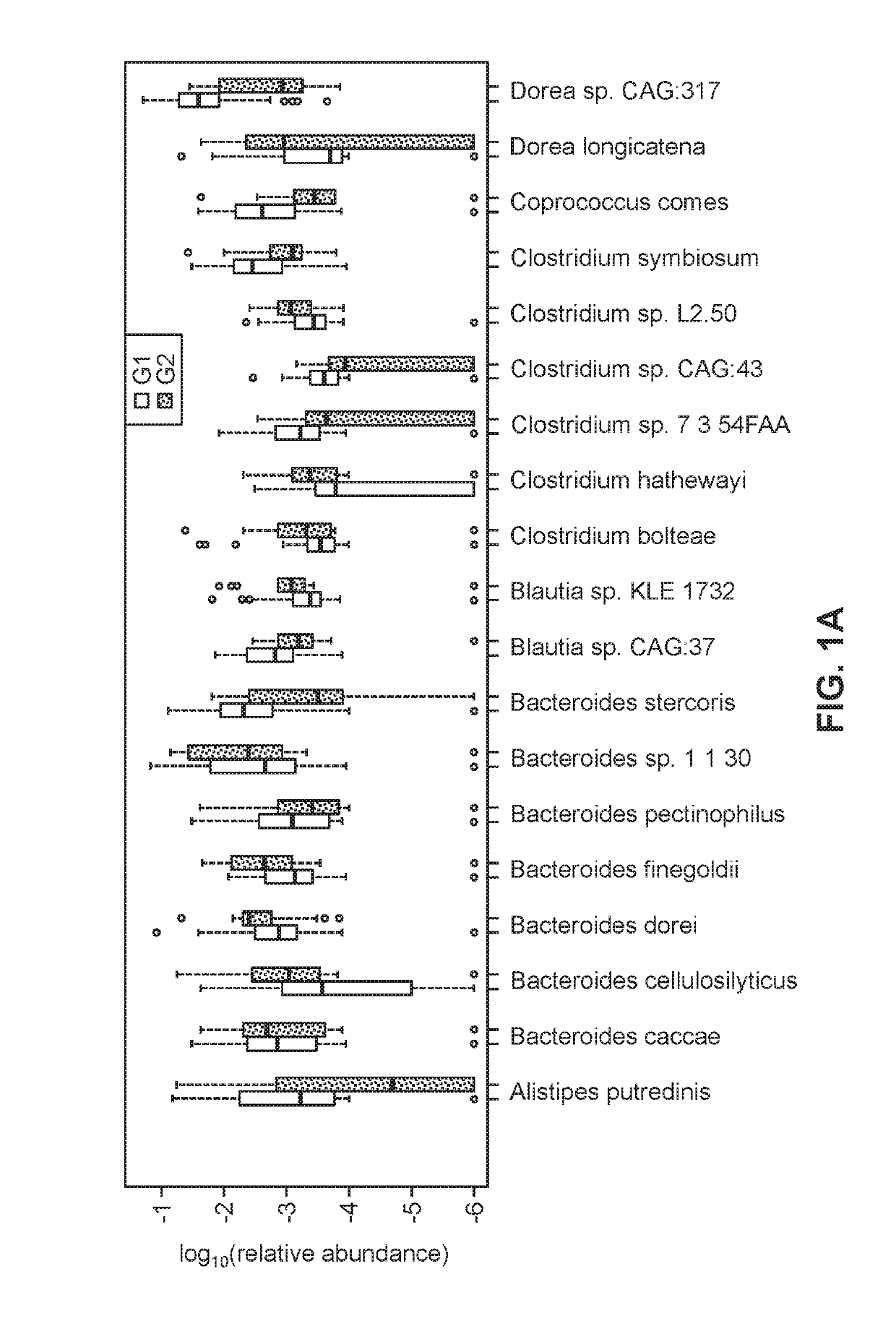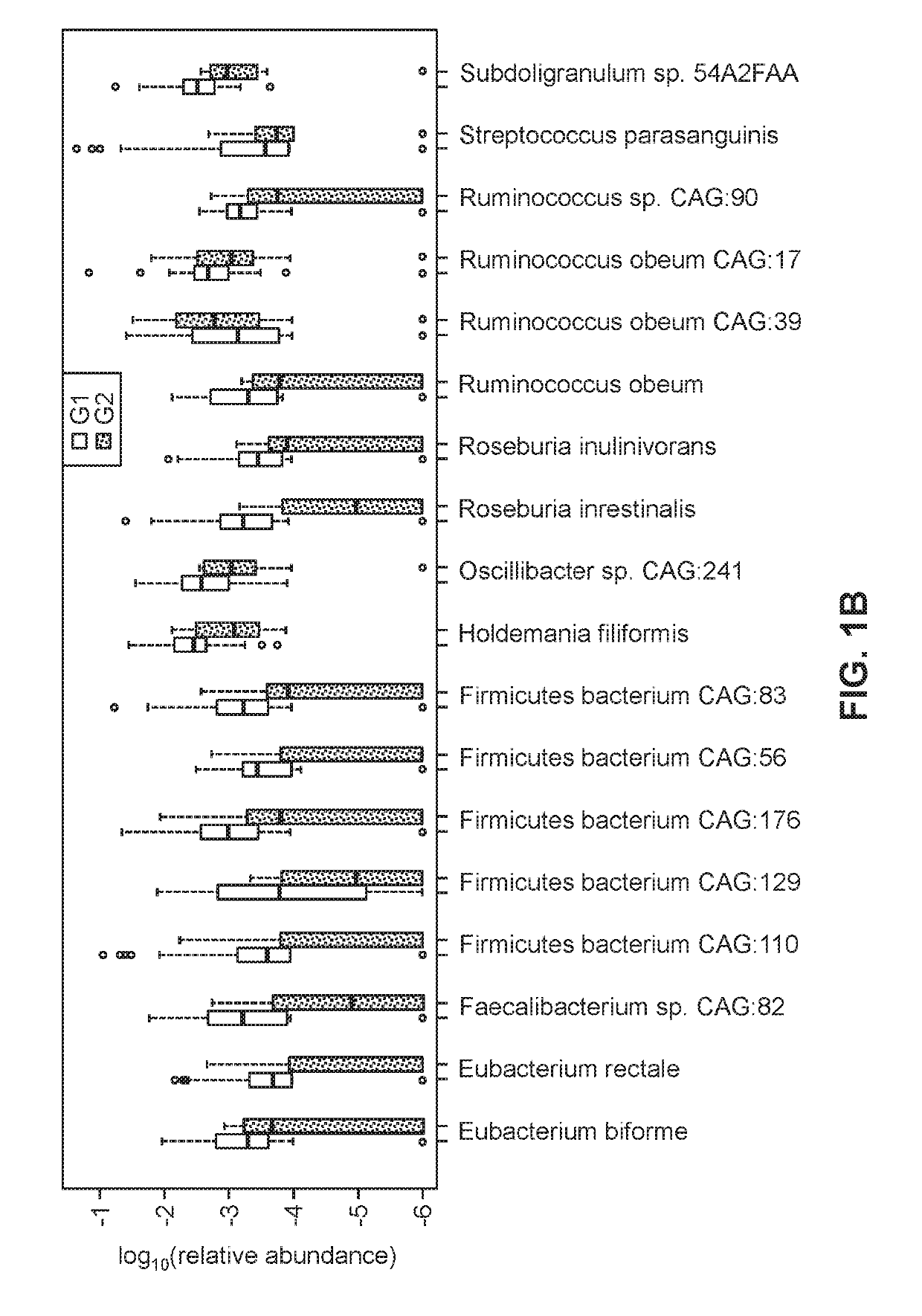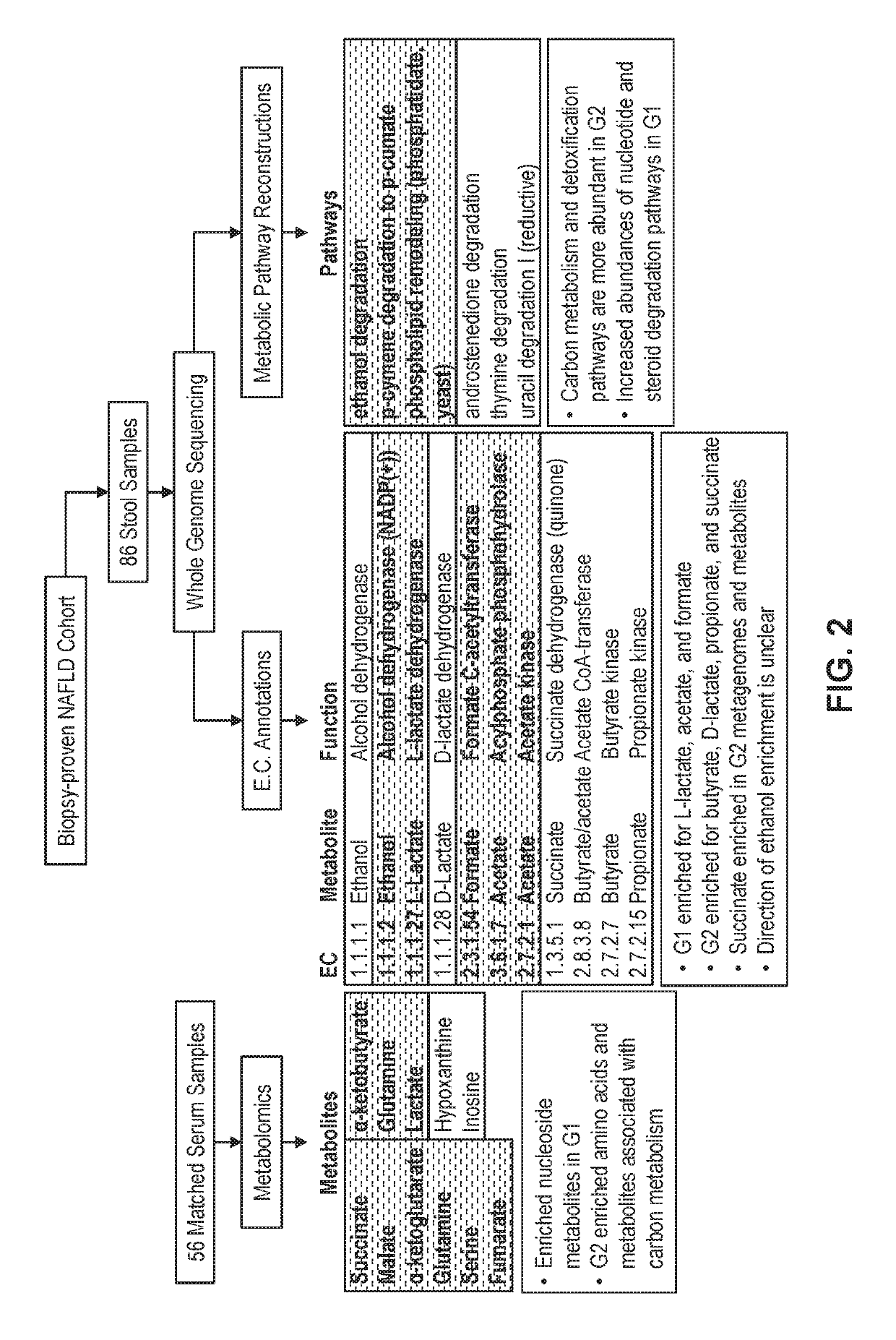Use of a microbiome profile to detect liver disease
a microbiome profile and liver disease technology, applied in the direction of microbiological testing/measurement, ict adaptation, biochemistry apparatus and processes, etc., can solve the problem of other limitations of the related ar
- Summary
- Abstract
- Description
- Claims
- Application Information
AI Technical Summary
Benefits of technology
Problems solved by technology
Method used
Image
Examples
example 1
Analysis Of Human Gut Microbiota
[0143]A cohort of 86 individuals (female 56%) with biopsy-proven NAFLD were classified into two groups: Group 1 with 72 patients with stage 0-2 fibrosis were classified as mild / moderate NAFLD and Group 2 with 14 patients with stage 3-4 fibrosis classified as advanced NAFLD. Table 1.1 provides a summary of the individuals in Group 1 and Group 2.
TABLE 1.1Baseline Characteristics of patients with biopsy-proven NAFLDGroup 1:Group 2:Stage 0-2Stage 3-4Mild, ModerateAdvancedp-valueAll patientsFibrosisFibrosis(Student'sCharacteristicsN = 86N = 72N = 14t-test)DemographicsAge (mean ± SD) 48 ± 1.4 49.3 ± 12.663.4 ± 3 1.5e−12Male n (%)38 (44.2%)36(50%)2(14.3%)0.030White n (%)40 (46.5%)33(40.2%)7(50%)1.000Hispanic n (%)29 (33.7%)23(31.9%)6(42.9%)0.630ClinicalType 2 diabetes n (%)20 (23.3%)14(19.4%)6(42.9%)0.126Anthropometric (mean ± SD)Body mass index (kg / m2)31.2 ± 5.5 31.0 ± 5.432.2 ± 6.0 0.503Waist circumference (cm)102.4 ± 16.3 101.5 ± 19.2107.1 ± 17.3 0.823He...
PUM
| Property | Measurement | Unit |
|---|---|---|
| Volume | aaaaa | aaaaa |
| Fraction | aaaaa | aaaaa |
| Fraction | aaaaa | aaaaa |
Abstract
Description
Claims
Application Information
 Login to View More
Login to View More - R&D
- Intellectual Property
- Life Sciences
- Materials
- Tech Scout
- Unparalleled Data Quality
- Higher Quality Content
- 60% Fewer Hallucinations
Browse by: Latest US Patents, China's latest patents, Technical Efficacy Thesaurus, Application Domain, Technology Topic, Popular Technical Reports.
© 2025 PatSnap. All rights reserved.Legal|Privacy policy|Modern Slavery Act Transparency Statement|Sitemap|About US| Contact US: help@patsnap.com



